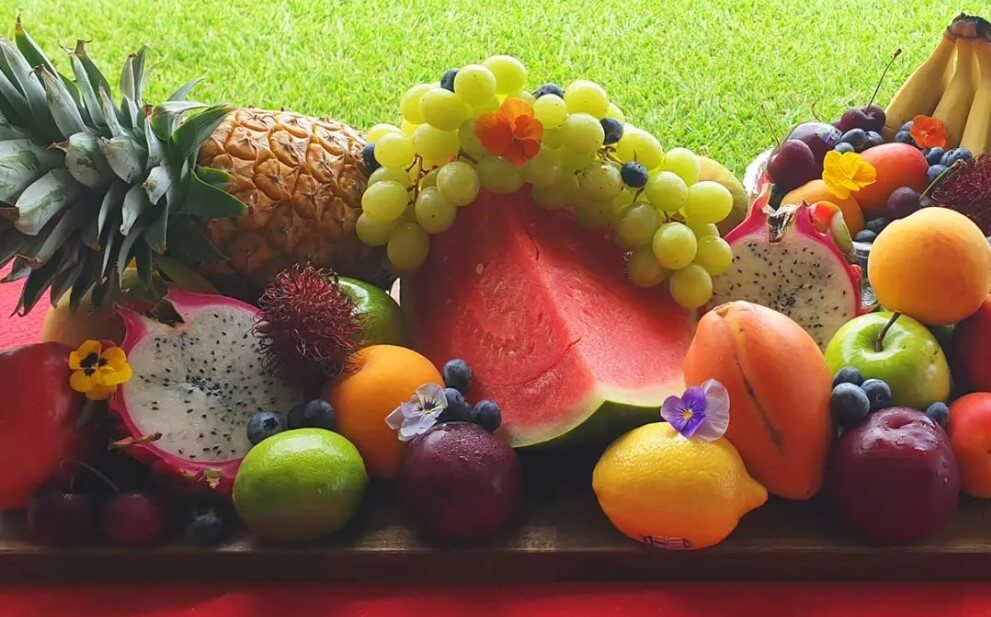
5 Tips for early educators to promote healthy eating
The promotion of healthy foods is an integral part of an early educator’s role. There is an invaluable opportunity to encourage healthy choices by influencing children. This article will look at 5 tips for early educators to promote healthy eating ideas and implement fruits and vegetables to children.
Why is it important? Childhood nutrition has a major influence on health throughout the entire lifespan. Despite this, 99% of Australian children do not meet the recommended daily serves of fruit and vegetables. It is important to introduce a variety of fruit and vegetables early in a child’s life. Children’s food preferences are directly linked to familiarity and consumption patterns. The earlier in the child’s life and the broader the exposure to fruits and vegetables, the healthier the Childs diet. A healthy diet in childhood promotes motor and cognitive development and prevents nutrient deficiencies, which can cause major health concerns later on in life. Obesity, hypertension and cardiovascular diseases later in life have a direct correlation to childhood nutrition. Adequate nutrition in early childhood allows children to maintain concentration, improves memory, strengthens bones, builds muscles, provides energy and ensures blood quality.
Growing and cooking fruits and vegetables. Enhancing fine motor skills with chopping and mixing and measuring can be an easy integration to educational activities. Maths for example, where the children might learn to count grapes or berries. As for English, the spelling of bananas etc, using subliminal messages we can incorporate healthy eating habits into everyday activities.
1. Activities
Keeping fresh fruits and vegetables in the minds of children will help them practice ‘Healthy Habits’ ongoing rather than a short module.
2. Spread healthy eating subjects throughout the year.
For example in February you might try back to school lunches and packing healthy lunches, or monthly themes like pumpkin in October where children focus on crafts and recipes.
Keeping fresh fruits and vegetables in the minds of children will help them practice ‘Healthy Habits’ ongoing rather than a short module. For example in February you might try back to school lunches and packing healthy lunches, or monthly themes like pumpkin in October where children focus on crafts and recipes.
3. Visible role models.
It’s important that educators are visible role models for healthy eating. Studies show children are heavily influenced by characters. A study published in the March issue of the Archives of Paediatrics and Adolescent Medicine (see below) shows that children remember nonverbal representations over verbal ones. Visual representation characters and logos such as Missy Peacharoo™ https://missypeacharoo.com.au/
can help them to remember the key message. Performances and interactive games are a key reinforcer for influencing children.
Missy Peacharoo™ for example offers an educational program (link) that can be integrated into the curriculum at early learning centres and children and their families can interact and follow Missy’s adventures through social media and website. (Link to newsletter). As well a special appearance from their favourite fun Aussie fresh produce character, the children are consistently reminded in a fun way through Missy Peacharoo’s catchy song and dance, book and posts.
4. Implement a Vegetable Garden
Teaching kids how and where fruit and vegetables come from helps reinforce the positive association with healthy eating and sustainability. Let’s be honest, it’s fun and very rewarding to watch your plant grow into an edible source of nutrients. Many schools have incorporated programs such as the Stephanie Alexander and From Paddock To Plate Children love picking herbs, fruits and vegetables and it can often lead to healthy discussions about the smell, feel and taste as well as opening an opportunity to discuss nutritional recipes and family food cultures.
5. Use sensory hands-on learning.
Imagine the reaction for example if the students saw a picture of a dragon fruit compared to an educator bringing one in and feeling the skin, experiencing the smell, the colours and then maybe tasting it for the first time. Where possible it’s important to allow children to experience health food choices through sensory play using taste, touch, sight and smell. You could then explore where the fruit comes from, how it’s grown and how it can be used in cooking.
Promoting healthy eating and fresh produce is a whole team approach, changing the association of healthy food to “everyday” food can also help children understand and remove the stigma attached to the word “healthy”.
Eating fresh food is an experience for everyone to enjoy. Initiatives that promote ‘healthy food choices’ are imperative in early learning centres and include positive messages about the benefits of eating right as opposed to the negatives of eating unhealthily.

